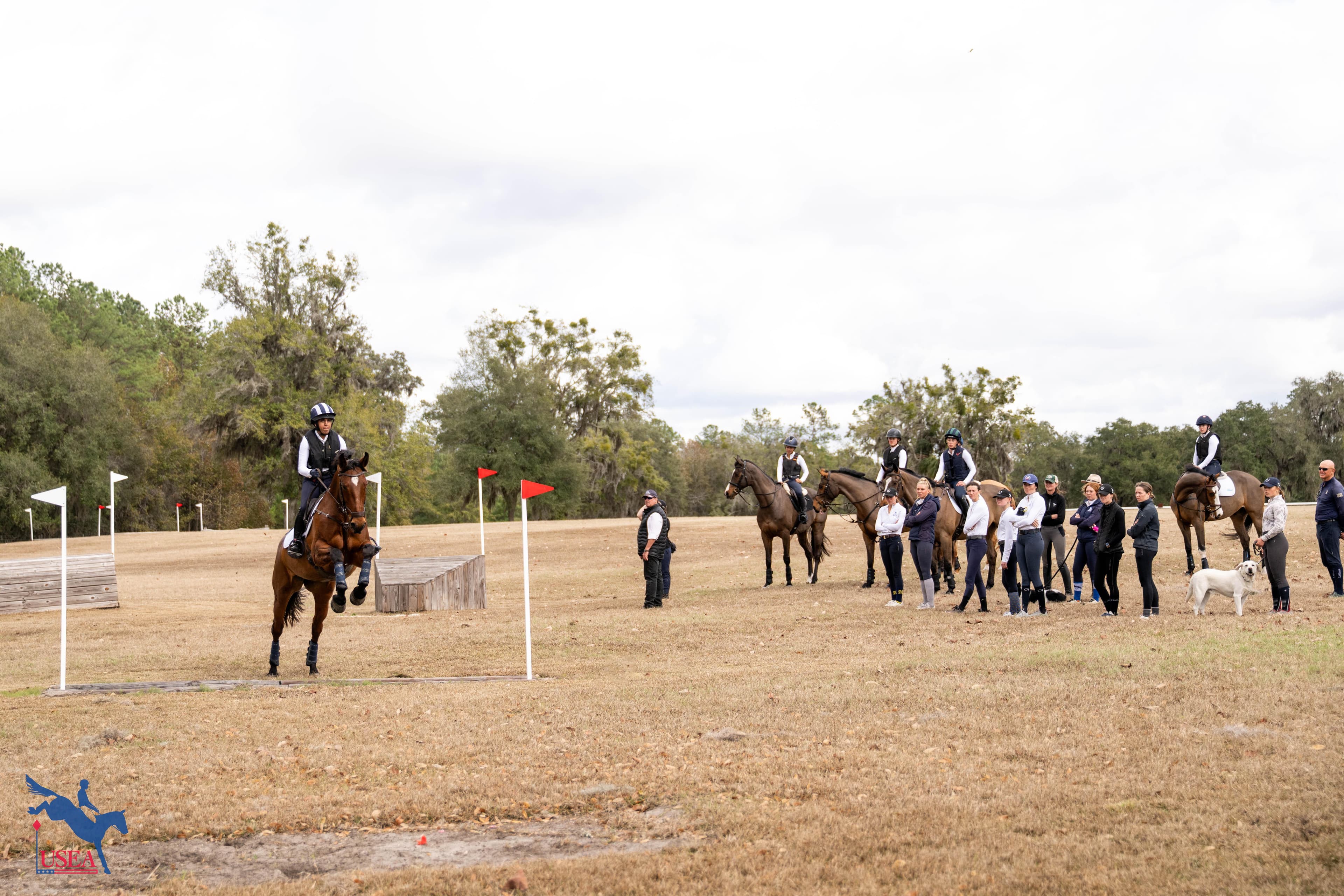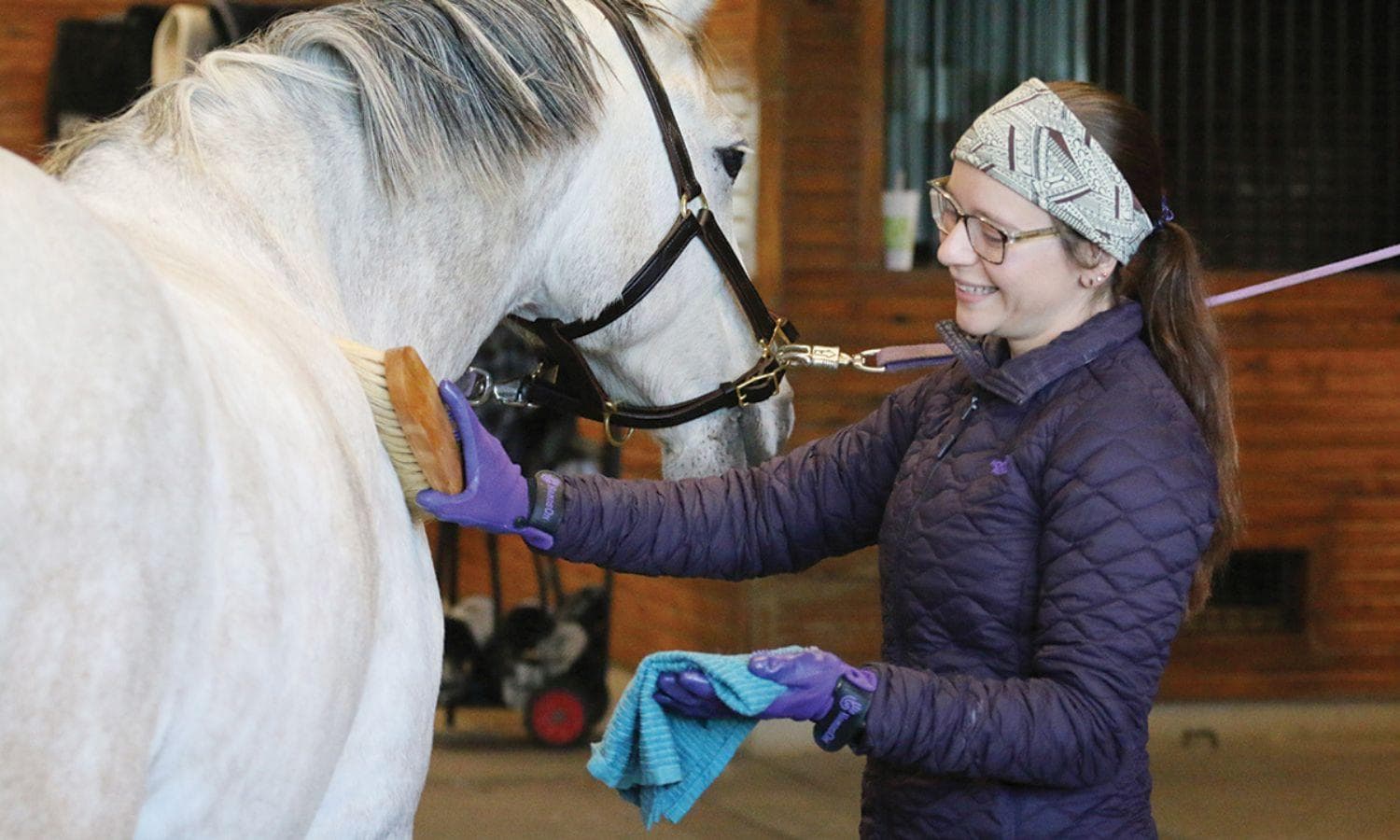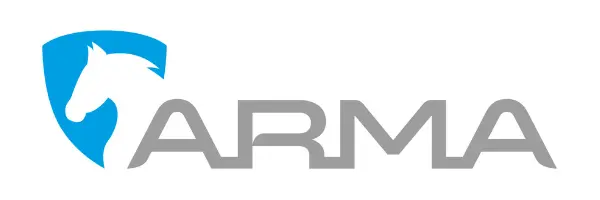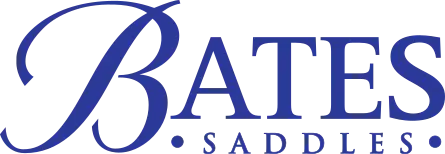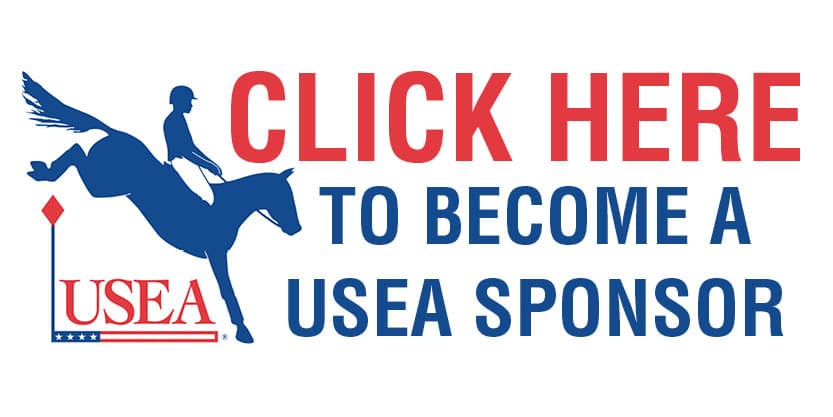Richard Jeffery Gives Early Convention Goers the Skinny on Show Jumping Course Design

The earliest participants of the 2016 USEA Annual Meeting and Convention joined esteemed show jumping course designer Richard Jeffery on Wednesday for a comprehensive clinic on course design. The group gathered at the Diplomat Resort & Spa in Fort Lauderdale, Fla., for a classroom session before heading out to Tiffany Morrissey’s East Wind Farm to get hands on experience.
The clinic was attended by course designers, licensed officials and competitors all looking to improve their course design technique. Jeffery, who designs many pure show jumping competitions, opened the day by explaining the job of eventing show jumping course designers: to design an “ordinary show jumping competition.” This is outlined in [i]USEF Rules for Eventing[/i] EV143, 2, whereby the show jumping phase of the competition is aimed to show that the horse and rider pair are sufficiently trained for the discipline.
[i]EV143, 2: “This test is similar to an ordinary show jumping competition, but without any attempt to find a ‘winner’ of this test on its own. Its main objective is to prove that the horse and rider are well trained in the specialist discipline of show jumping”[/i]
Jeffery returned back to this idea frequently throughout the seminar, reminding participants that eventing show jumping does not require ‘tricky’ courses or obstacles often seen in jump-offs and speed courses of pure show jumping.
The first step to designing any show jumping phase is to outline the track. Pen and pencil handy, Jeffery says designers should dictate the flow and direction of their track before even considering the jumps themselves. “Show jumping is a dressage course with jumps in it,” he explained.
Once the track is traced out, then designers can begin to map out jump locations. With a competition consisting of different levels, Jeffery was adamant that course design should change to reflect the level of difficulty. “We must not build one course and make it higher and higher. Muscle up the higher levels. It must get more difficult up the levels. It’s just like in the dressage, we don’t just take out a few movements in the Advanced test for Novice, it’s the same in the show jumping.”
When laying out the show jumping course, he encourages course designers to consider what alternate courses could be used. Designers should start with the highest level of competition and down to the lower levels. Above is an example of using the same space and fences for a three different levels.
Jeffery shared these tidbits to keep in mind when crafting a course:
- No double before fence four and no combination before fence seven is a good rule of thumb.
- Balance your course. When the design is laid out, list the number of fences that have left and right lead approaches to make sure the course does not unintentionally favor one or the other.
- Watch the turns to fences at the end of a small arena. These often result in a 90 degree turn that can be exceedingly difficult. Jeffery encourages designers leave four strides (60 feet) after landing before the turn begins, and another four strides (60 feet) of a straight approach after the turn.
- Bending lines give designers many options for use in different tracks.
- Make the first fence as inviting as possible and a hole below maximum height.
- The purpose of a triple bar jump is to set up a line.
- “A triple bar is there to set up a line because you have a different arc over it. You use it to change the distance to the next fence,” Jeffery explained.
- Jeffery urged designers not to use a triple bar below Preliminary level. At the lower levels, the maximum width dictates that the wings of the fence move closely enough together so that if a horse stops and slightly climbs onto the fence, it won’t have the same ability to collapse like an ordinary oxer.
- “In the higher divisions it makes a super first fences because it’s a simple fence where riders must just get to the base of it,” he added.
- If boxes are used as fillers, Jeffery encourages designers to push them all the way to the first rail of a fence. In this case, there is a definite spot that they are placed which makes the competition consistent for all riders. If a box is pushed out in front of the fence and a horse stops and moves the boxes, there is no definite spot to move them back to, so ring crew are forced to estimate. This could lead to different riders having a slightly different fence.
- All weather arenas, although a valuable asset, require maintenance. An all-weather arena should be watered and dragged for every 50 riders.
- Islands are a great use of extra sponsor fences, and can dress up an arena. “Apart from making the arena more attractive, I find these useful in preventing horses from ‘falling in’ on the bends, especially in a small arena,” he explained. Islands can also create a place for jump crew or photographers to safely stand in the arena.
- Sometimes the best laid plans are made on paper, but issues may arise in the course walk. Jeffery encourages designers to consider especially how the colors of the fences might blend with the surrounding areas or the arena sand.
Jeffery was joined throughout the clinic by well-known designers Marc Donovan and Chris Barnard. He explained to participants that those two design more than 50 percent of the courses for international divisions across the country, demonstrating the need for new designers. As USEF Show Jumping Course Advisor, Jeffery shared a wealth of knowledge with the group, encouraging questions and lively discussion.
The USEA would like to extend a huge thank you to Tiffany Morrissey for inviting us to her beautiful East Wind Farm for this clinic, and sharing her talented demo rider and horses with our group.
About the USEA Annual Meeting and Convention
The USEA Annual Meeting and Convention takes place each December and brings together a large group of dedicated USEA members and supporters to discuss, learn, and enjoy being surrounded by eventing enthusiasts. The 2016 Annual Meeting and Convention is taking place at the Diplomat Resort & Spa Hollywood in Fort Lauderdale, Fl. December 7-11, 2016.

